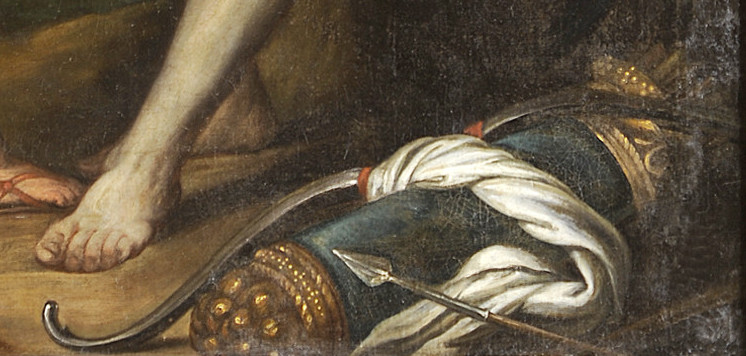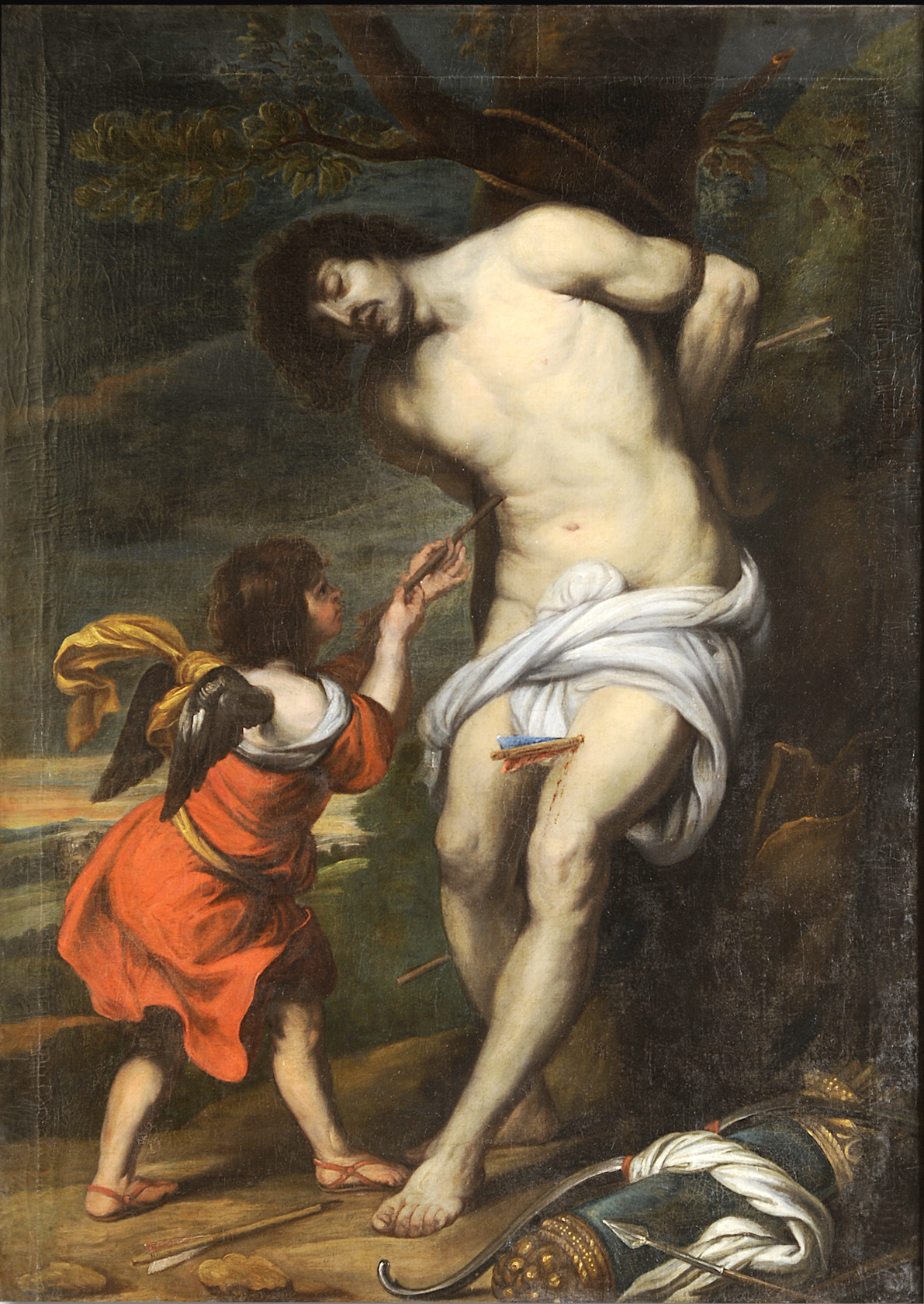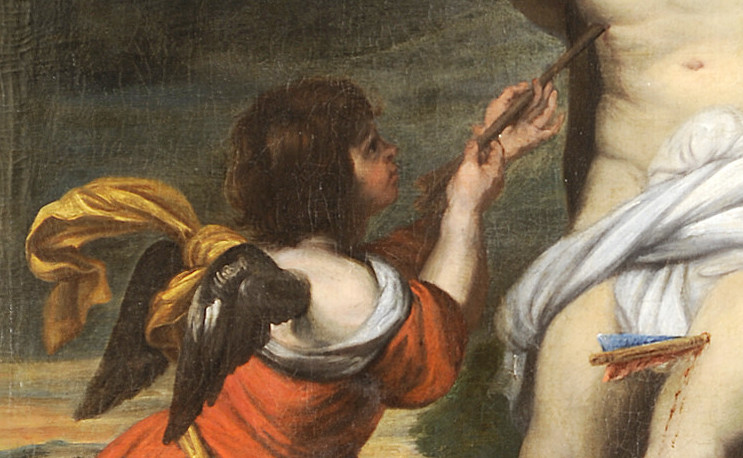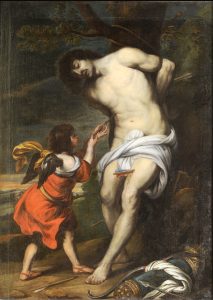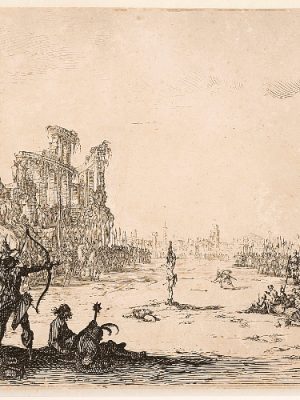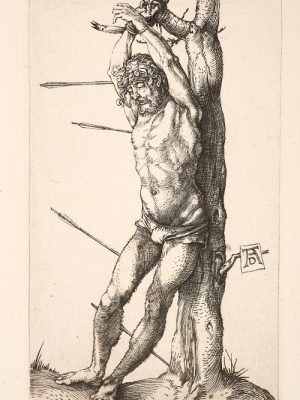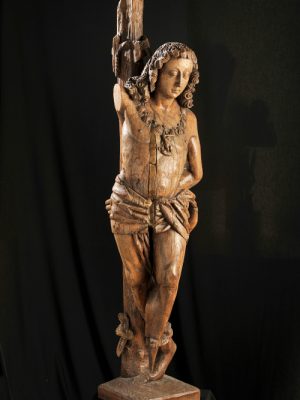Saint Sebastian healed by an angel
Anonymous after an engraving by Paulus Pontius (1603-1658)
and a painting by Gerard Seghers (1591-1651)
Original work dated from the 17th century and coming from Flanders
Oil on canvas
Ancient Fund of the museum
______________
This oil painting belongs to the 17th century Flemish School. It is based on an engraving by Paulus Pontius, which represented a painting, now lost, by Gerard Seghers, one of the masters of Baroque art who notably worked for Rubens.
It shows St Sebastian after his first martyrdom when, pierced with arrows, he remains panting, attached to the tree of his agony. Usually healed by Saint Irene of Rome, here he is rescued by an angel, whose presence next to St Sebastian makes him the symbol of the power of faith, which allows him to cheat the arrows of death and survive this terrible ordeal. This representation of St Sebastian is characterized by the desire not to highlight the barely visible wounds. It offers the eye a beautiful, ideally proportioned naked body that is a metaphor of the perfection of the holy soul.
Gérard Seghers
After his trip to Italy and Spain (1611-1621) Gerard Seghers was strongly influenced by Caravaggio’s and especially Manfredi’s paintings, to the point where it is sometimes difficult to identify the master’s hand. Before coming home from his trip to Spain, he became court painter to Philip III and then went back to Antwerp. In 1634, upon the arrival of Philip III Don Fernando as infant-cardinal, he became his official painter. Towards 1645, his style evolved towards more shimmering colors that were more appreciated and characteristic of Rubens’ style.
Paulus Pontius
Paulus Pontius is an engraver who began his career in the workshop of Lucas Vorsterman, Rubens’ engraver. When his master left, Pontius took his place and became Rubens’ but also Van Dyck’s favorite engraver. After the death of the two masters, he reproduced other artworks from contemporary masters such as Seghers.
